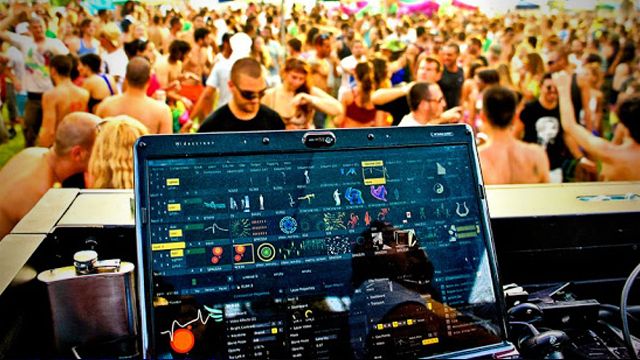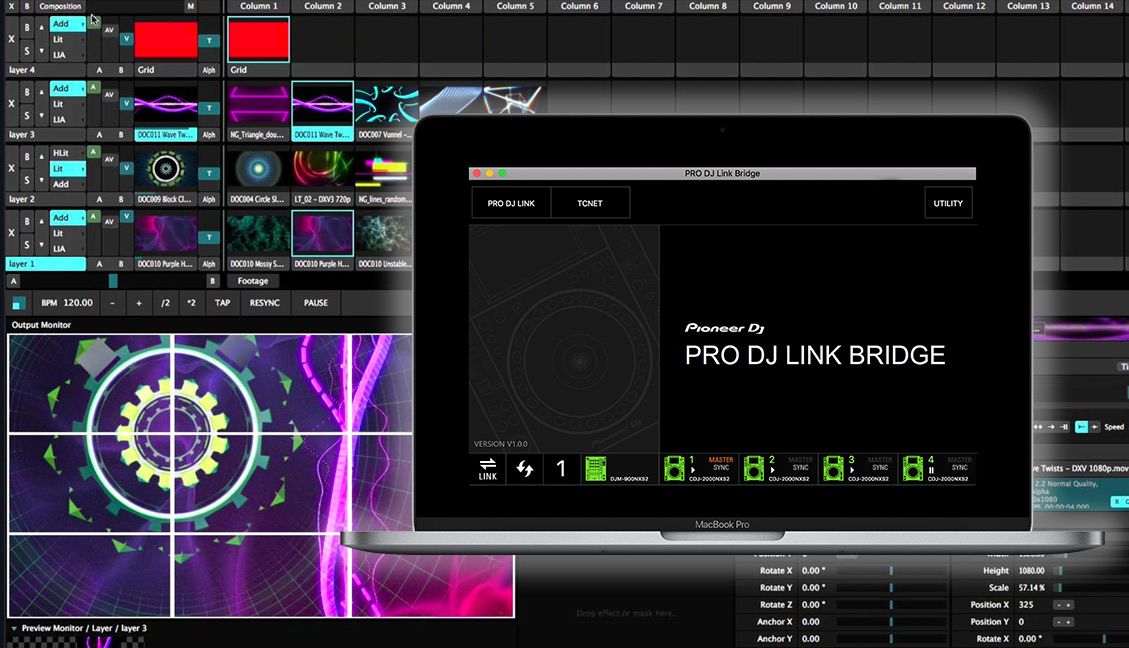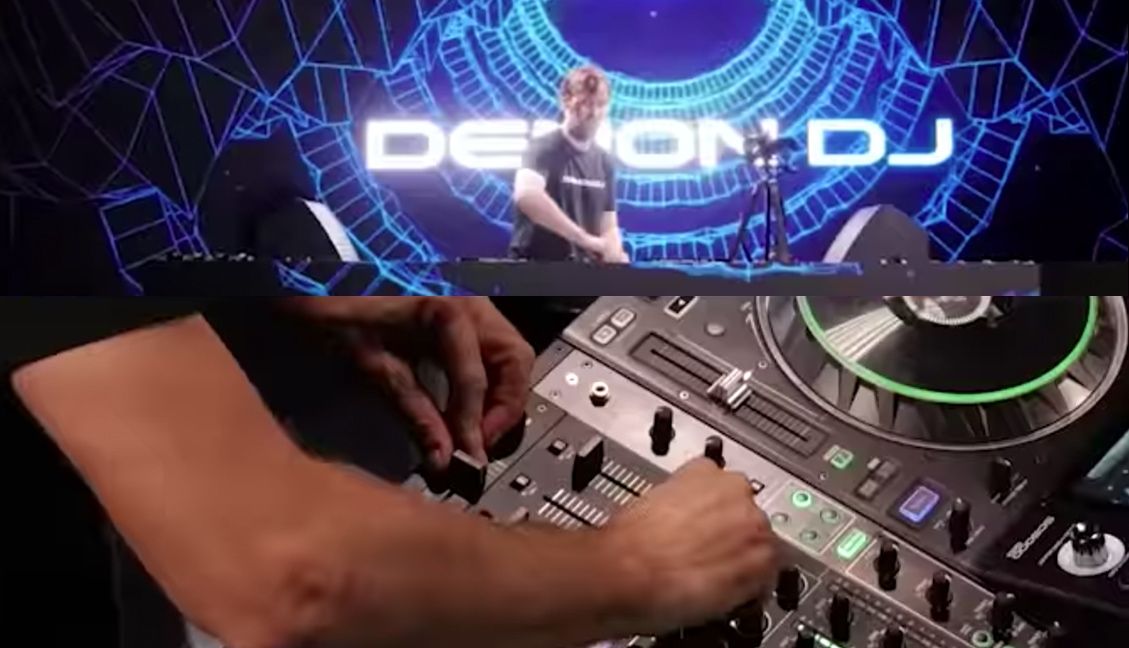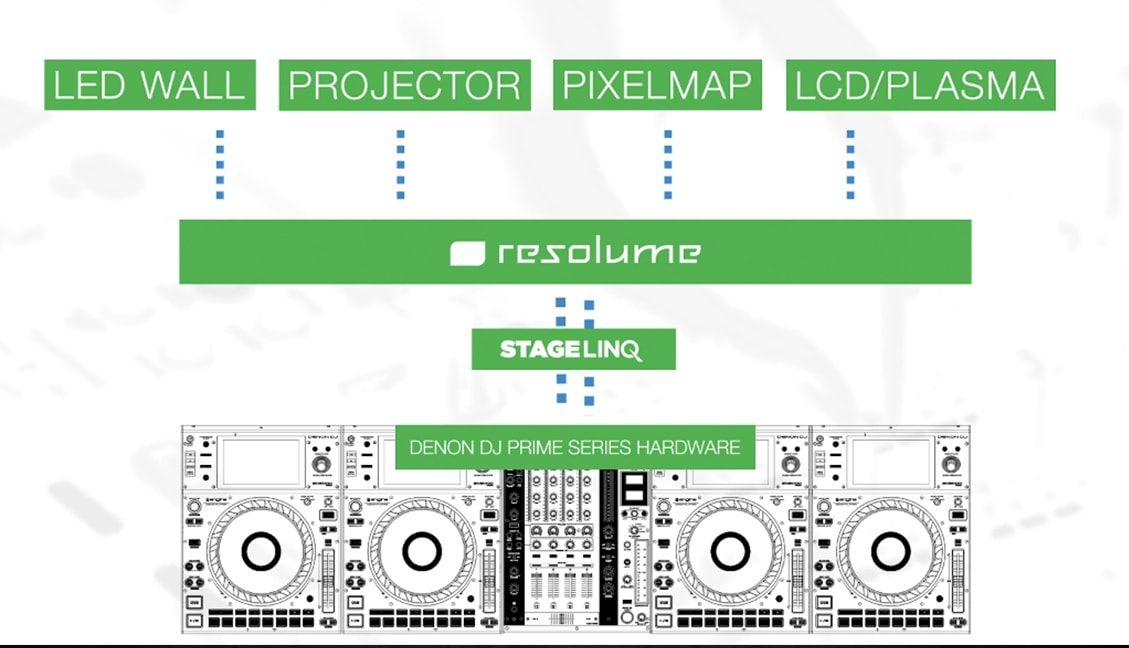A touring DJ without a unique visuals / lighting show is increasingly rare. Dance music audiences have come to expect interesting on-stage visuals – but how are these shows set up and run, and is it possible to have visuals with a DJ who plays a spontaneous set? Today, experienced production designer Michael Fullman shares some of the secrets behind professional visuals work.
DJ Techtools asked me to outline the general pros and cons of doing visuals for pre-programmed vs. on-the-fly DJ sets. In my years of work with many artists, there tend to be three approaches to triggering a show with a DJ or performance artist:
A MIDI Triggered Visuals Set
In a MIDI triggered set, we can actually program Ableton to spit out OSC or MIDI messages to a Resolume (very common VJ software) or other media server session – and the visual set will kind of follow along with the show. Essentially the concept is:
- the DJ or producer triggers tracks/clips in Ableton
- those clips also send out MIDI signals that go to the media server
- the media server launches video clips and lighting scenes that are mapped to those MIDI signals
I know a couple of artists who have done this really successfully – including Flume with Infinity Prism rig. While I don’t have firsthand knowledge that it was MIDI triggered, all the telltale signs are there. This was an interactive light sculpture that sat in front of Flume, made of six LED screens and two mirrors, as well as additional visual screens, and (as the below video’s description puts it) “was driven entirely by Flume’s performance” – which makes it pretty clear that he’s in control:
The cool thing about MIDI-triggered visual sets is that an artist or lighting designer can get really modular with a setup, moving things around the stage or reorienting projectors, screens, etc. Even after a bunch of changes, the MIDI and the OSC will just keep up and stay on point. It’s usually best when you have a start trigger (like at the beginning of each song, breakdown, etc), then you could add some effect-based triggers too. It still can make a pretty tight show, but it’s not the peak of cueing ability in that once it is going, my job is basically just to make sure things are on track.
Example: A good example of a MIDI-cued show from Ableton to Resolume is Icicle’s show (ed- this is the best footage we’ve found of it yet online), my buddy Drew Best designed that one.
Timecode Synchronized DJ Visuals
The concept of running timecode out of a DJ set into a visuals setup has been around for a little while – you might remember it from this interview with Armin Van Buuren explaining how he sends SMPTE timecode out from two of his CDJs to his visuals guy in the front of house booth:
Timecode is really awesome because you can get so accurate with lighting and video cues, but the drawback is that it is very unforgiving if you want to change or rearrange the set whatsoever. It really stays locked in and solid the entire time which guarantees the most consistent show (and allows intricate and powerful moments for the visual production designer), but is the most creatively limiting by far for the artist who is actively changing the set.
I run Linkin Park’s visuals show this way, and it allows us to do a completely repeatable show that flows the same way every single time. We can get really intricate with our cueing to specific moments in songs, and the video is also just plug and play and spot on for certain hits.
On-The-Fly Visuals
This is a completely on-the-fly set where we are just following the DJ or performer. Often when making one of these shows I’ll build an actual flow to it and rehearse that flow so it gives us some points of rhythm to stick to, but it allows the artist to still improvise and feel free. It absolutely is more difficult than either of the other styles, but really this is just about having a skilled operator or VJ and that person having at least some kind of understanding or idea of what the set is going to be or at least the style of music.
Kaskade is great example of a non-time coded but really cued show. There are no MIDI-cued events, just good operators that we timeline out and rehearse, creating a really tight show. Incredible, disciplined operators really made this show possible.
Want to see more content about DJ visuals, Resolume, and more? Let us know in the comments what you would like to see!
Header photo credit: user Godzil on the Resolume forums.









